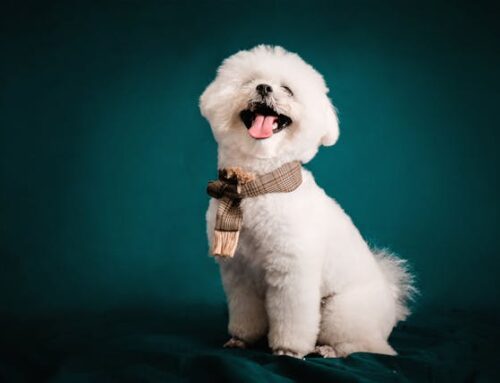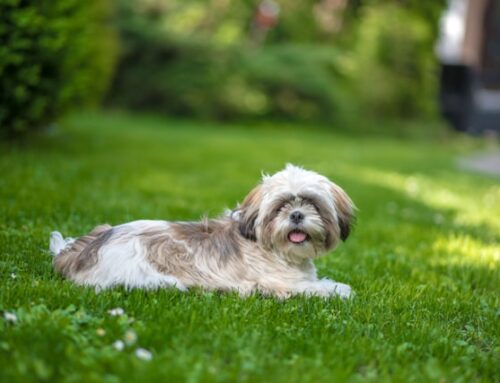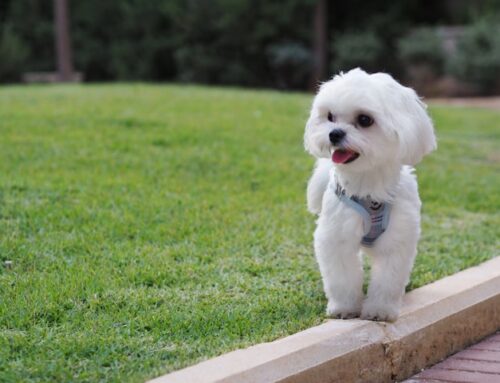Introduction to Deciphering Puppy Body Language

Our comprehensive resource is designed to help new and experienced dog owners understand and interpret their puppy’s behavior. From tail wagging to ear positioning, puppies use a variety of cues to communicate their feelings and intentions.
This guide will explore common puppy body language signals, helping pet owners develop a deeper understanding of their furry companions and strengthen their bond.
Importance of understanding puppy body language
Understanding puppy body language is crucial for pet owners as it allows them to communicate effectively with their furry companions. By recognizing the signs of fear, stress, or discomfort, owners can address these issues promptly, ensuring their puppy feels safe and secure.
Moreover, interpreting body language helps strengthen the bond between pet and owner, leading to a happier and more fulfilling relationship.
Overview of common puppy body language cues
An overview of common puppy body language cues can help pet owners better understand their furry friends. Some common cues include wagging tails, which can indicate happiness, and flattened ears, which may signal fear or submission.
By learning to recognize these cues, owners can respond appropriately to their puppy’s needs and strengthen their bond.

Puppy Body Language: Facial Expressions
Happy expressions
Happy expressions in puppy body language are often characterized by a relaxed face with bright eyes and a slightly open mouth. A happy puppy may also wag its tail in a loose, sweeping motion and have relaxed ears that are in their natural position.
Understanding these facial expressions can help pet owners recognize when their puppy is content and comfortable.
Fearful or anxious expressions
Puppies communicate their emotions through facial expressions, and a fearful or anxious puppy may exhibit certain cues. Look for wide eyes, with the whites showing, flattened ears, and a tense or closed mouth.
The puppy may also lick their lips or yawn excessively, indicating stress. Understanding these expressions can help owners provide comfort and support to their anxious puppy, helping them feel more secure in their environment.
Aggressive expressions
Aggressive expressions in puppies are characterized by a wrinkled muzzle, raised hackles (hair along the back), and a snarling or bared teeth. Their ears may be pinned back, and they may have a stiff, upright posture.
Recognizing these signs is crucial for preventing potential conflicts and ensuring the safety of both the puppy and those around them.
Playful expressions
Playful expressions in puppies are often easy to spot and indicate a happy, engaged pup. Look for a relaxed mouth with a slight, open grin, bright eyes, and a wagging tail.
They may also play bow, lowering their front end while keeping their rear end elevated, inviting interaction. Understanding these expressions can help owners engage in fun, positive playtime with their puppy, strengthening their bond.
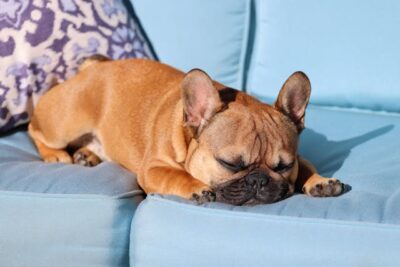
Puppy Body Language: Ear Positions
Forward and alert
When a puppy’s ears are forward and alert, it typically indicates that they are attentive and interested in their surroundings. This ear position suggests a state of curiosity or readiness to engage with something or someone.
Understanding this body language can help pet owners recognize when their puppy is focused and potentially eager to learn or play.
Relaxed and floppy
When a puppy’s ears are relaxed and floppy, it usually indicates that they are calm and at ease. This ear position is often seen when a puppy is resting or feeling content in their environment.
Understanding this body language can help pet owners gauge their puppy’s mood and ensure they feel comfortable and secure in their surroundings.
Pinned back in fear or aggression
When a puppy’s ears are pinned back, it can signal fear or aggression. In fearful situations, a puppy may flatten their ears against their head to appear smaller and less threatening.
However, in aggressive contexts, pinned-back ears can indicate readiness to defend or attack. Understanding this body language can help pet owners respond appropriately to their puppy’s emotional state, ensuring their safety and well-being.

Puppy Body Language: Eye Contact
Soft and relaxed gaze
A soft and relaxed gaze from a puppy typically indicates a calm and friendly demeanor. In this state, the puppy may be seeking attention or expressing contentment. Soft eye contact is often a sign of trust and comfort, showing that the puppy is at ease in its environment.
Understanding this body language can help pet owners gauge their puppy’s mood and strengthen their bond.
Staring as a sign of aggression or challenge
When a puppy stares intensely, it can be a sign of aggression or challenge. This behavior is often seen when a puppy feels threatened or is asserting dominance.
Staring in this context is a way for the puppy to communicate its readiness to defend itself or establish its position. It’s important for pet owners to recognize this body language and respond appropriately to avoid escalating the situation.
Avoiding eye contact out of fear or submission
When a puppy avoids eye contact, it can be a sign of fear or submission. Puppies may avert their gaze when feeling intimidated or trying to appease a more dominant dog or person.
This behavior is a way for the puppy to communicate its non-threatening intentions and avoid conflict. Pet owners should be aware of this body language to understand their puppy’s emotional state and respond appropriately with reassurance and positive reinforcement.
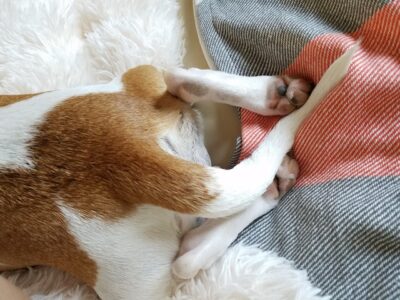
Puppy Body Language: Tail Wagging
Different types of tail wags and their meanings
Understanding puppy body language, especially tail wagging, is key to deciphering their emotions. A broad, sweeping wag usually indicates happiness and excitement, while a stiff, rapid wag can signal alertness or agitation.
A low, slow wag may indicate insecurity or submission, and a tucked tail suggests fear or anxiety. Observing the context and other body signals can help interpret the message behind the wag.
Contextual clues to interpret tail wagging
Interpreting a puppy’s tail wag involves considering the context of the situation. For example, a wagging tail accompanied by a relaxed body posture and soft eyes usually indicates a friendly, playful mood.
However, if the tail wag is accompanied by a tense body, raised fur, or growling, it could indicate aggression or fear. Understanding these contextual clues is essential for correctly interpreting a puppy’s body language.
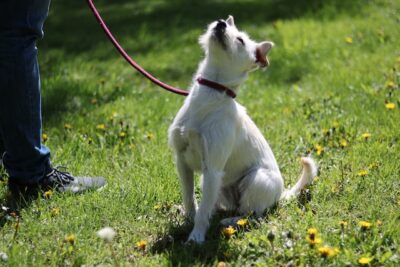
Puppy Body Language: Body Posture
Relaxed and loose body posture
A puppy with a relaxed and loose body posture typically indicates a calm and content state. Their muscles are not tense, and their movements are fluid and natural.
This posture often accompanies friendly behavior, such as when greeting people or other animals, and suggests a sense of comfort and ease in their surroundings.
Stiff and tense body posture
A puppy with a stiff and tense body posture typically indicates a state of alertness, anxiety, or aggression. Their muscles are rigid, and their movements are constrained and cautious.
This posture often accompanies defensive or fearful behavior, such as when encountering unfamiliar people, animals, or environments, and suggests a readiness to react to perceived threats.
Crouching or low body posture
A puppy with a crouching or low body posture is displaying submission, fear, or anxiety. This posture is characterized by the puppy lowering its body close to the ground, with its tail tucked between its legs and ears flattened against its head.
It often indicates that the puppy is trying to appear non-threatening in response to a perceived threat or dominant figure. Understanding this body language can help owners and others respond appropriately to the puppy’s emotional state.
Rolling over as a submissive gesture
When a puppy rolls over, exposing its belly, it is a submissive gesture indicating trust and deference. This behavior is often seen during play or when the puppy wants to show submission to a more dominant dog or person.
It’s a vulnerable position that demonstrates the puppy’s willingness to be non-threatening and avoid confrontation. Understanding this body language can help owners respond appropriately to their puppy’s social cues.

Puppy Body Language: Vocalizations
Barking, whining, and growling
Puppies use a variety of vocalizations to communicate their needs and feelings. Barking can indicate excitement, alertness, or a desire to play, while whining often signals distress, anxiety, or a need for attention.
Growling is a warning sign that the puppy is feeling threatened or agitated and may be preparing to defend itself. Understanding these vocalizations can help owners address their puppy’s needs and respond appropriately to different situations.
Howling as a form of communication
Howling is a form of vocal communication commonly used by puppies to express various emotions and needs. It can indicate loneliness, seeking attention, or responding to other dogs’ howls.
Puppies may also howl in response to certain sounds or stimuli, as it is a natural behavior inherited from their wild ancestors. Understanding why a puppy is howling can help owners address any underlying issues and provide appropriate attention or comfort.
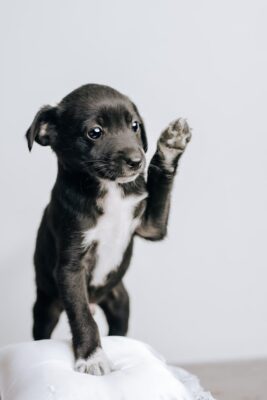
Puppy Body Language: Pawing and Gestures
Pawing for attention or play
Puppies often use pawing as a gesture to seek attention or initiate play. They may gently tap or scratch at objects or people to communicate their desire for interaction.
This behavior is a natural way for puppies to engage with their environment and is usually a sign of friendliness and eagerness to interact. Understanding this body language can help owners respond appropriately and engage in positive interactions with their puppies.
Raised paw as a sign of uncertainty or submission
When a puppy raises a paw, it can be a sign of uncertainty or submission. This gesture is often accompanied by other submissive behaviors, such as lowered body posture or avoiding eye contact.
Puppies may raise a paw when they are unsure about a situation or feel intimidated by other dogs or people. Understanding this body language can help owners recognize when their puppy is feeling unsure or submissive and respond with reassurance and patience.

Reading Context and Environment
Responding to other animals or humans
When reading a puppy’s body language in response to other animals or humans, it’s important to consider the context and environment. A puppy’s reactions can vary based on factors such as their age, socialization, and past experiences.
They may display playful behavior, fear, or aggression depending on how they interpret the situation. Understanding these cues can help owners create a safe and positive environment for their puppy, ensuring they feel comfortable and secure in various social interactions.
Reacting to new or unfamiliar situations
When interpreting a puppy’s body language in new or unfamiliar situations, it’s essential to consider their comfort level and confidence. Puppies may display signs of curiosity, such as sniffing or cautious exploration, indicating a healthy interest in their surroundings.
However, they may also show signs of fear or anxiety, such as cowering, hiding, or avoiding eye contact, suggesting discomfort or unease. Understanding these cues can help owners introduce new experiences gradually and positively, ensuring their puppy feels safe and secure in different environments.

Signs of Stress or Discomfort
Panting excessively
When a puppy pants excessively, it can be a sign of stress or discomfort. This behavior may occur in response to unfamiliar or uncomfortable situations, overheating, or anxiety.
It’s important to monitor the puppy’s environment and behavior to identify the underlying cause and address any potential issues to ensure their well-being and comfort.
Yawning frequently
Frequent yawning in puppies can be a sign of stress or discomfort. This behavior is often seen in situations that make the puppy feel anxious or uneasy, such as during vet visits, car rides, or new environments.
Yawning can also be a calming signal that puppies use to communicate their stress and try to diffuse tension. Understanding this body language can help pet owners recognize when their puppy is feeling overwhelmed and take steps to make them more comfortable.
Lip licking or drooling
Lip licking or drooling in puppies can indicate stress or discomfort, especially when it occurs in contexts like new environments, interactions with unfamiliar people or animals, or during training sessions.
These behaviors can be signs of anxiety or nervousness, and puppies may use them as a way to calm themselves. Observing and understanding these subtle cues can help pet owners intervene and alleviate their puppy’s stress to ensure a more positive and comfortable experience for them.
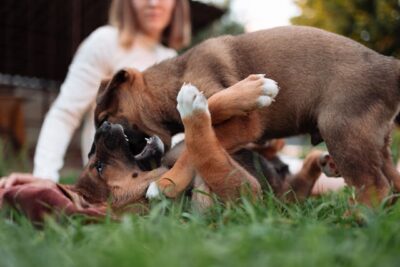
Interpreting Play Behavior
Play bowing as an invitation to play
When puppies engage in play bowing, they typically lower their front body while keeping their hindquarters up, often accompanied by wagging tails and bouncy movements.
This behavior is a clear invitation to play and is commonly seen when puppies interact with other dogs or humans in a playful manner. Play bowing helps signal friendly intentions and can be followed by playful interactions such as chasing, wrestling, or fetching toys.
Understanding this behavior can help pet owners recognize when their puppy is in a playful mood and encourage positive play interactions.
Gentle mouthing vs. aggressive biting
When interpreting puppy body language during play, it’s important to consider teething. Gentle mouthing, accompanied by relaxed body language, soft eyes, and a loose jaw, is often a way for puppies to explore and relieve teething discomfort.
Aggressive biting, with tense body posture, staring, and a stiff jaw, may indicate pain or irritation. Understanding these cues, along with the stage of teething, can help owners respond appropriately and ensure safe, comfortable play for their puppies.

Social Interactions with Other Dogs
Understanding dog-to-dog communication cues
When observing puppy body language during social interactions with other dogs, it’s essential to understand dog-to-dog communication cues. These cues include body posture, facial expressions, tail position, and vocalizations.
A relaxed, wagging tail and play bow often indicate a desire to engage in friendly play, while a stiff body, raised hackles, and bared teeth may signal aggression or discomfort. By recognizing these cues, owners can help facilitate positive interactions between their puppy and other dogs.
Intervening in potentially aggressive interactions
When managing puppy social interactions with other dogs, it’s crucial to intervene appropriately in potentially aggressive situations. Signs of aggression, such as stiff body posture, raised hackles, and intense staring, indicate a need for intervention.
Owners should calmly and assertively redirect their puppy’s attention, using positive reinforcement to encourage more appropriate behavior. By stepping in early and effectively, owners can help prevent escalation and promote positive socialization experiences for their puppy.
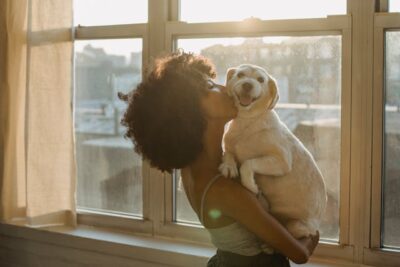
How to Respond to Your Puppy’s Body Language
Providing reassurance and comfort
Responding to your puppy’s body language with reassurance and comfort is important for building trust and a strong bond.
When your puppy shows signs of fear or anxiety, such as cowering, trembling, or seeking hiding spots, calmly speak to them in a soothing voice and offer gentle pets or cuddles if they are receptive.
Avoid reinforcing fearful behavior by remaining calm and not coddling excessively. Providing reassurance and comfort can help your puppy feel safe and secure in new or stressful situations.
Redirecting behavior using positive reinforcement
When responding to your puppy’s body language, redirecting behavior using positive reinforcement can be effective. For example, if your puppy is jumping up, you can redirect their attention by asking them to sit, then rewarding them with a treat or praise.
This helps them learn more appropriate behaviors while reinforcing positive interactions. Consistency and patience are key to successfully redirecting your puppy’s behavior using positive reinforcement.
Seeking professional help for behavior issues
If your puppy’s body language indicates behavior issues that you’re unable to address on your own, seeking professional help is advisable. A certified dog trainer or animal behaviorist can assess your puppy’s behavior, provide personalized guidance, and develop a training plan tailored to their needs.
Addressing behavior issues early with professional help can prevent them from becoming more serious problems in the future, ensuring a happy and well-adjusted companion.
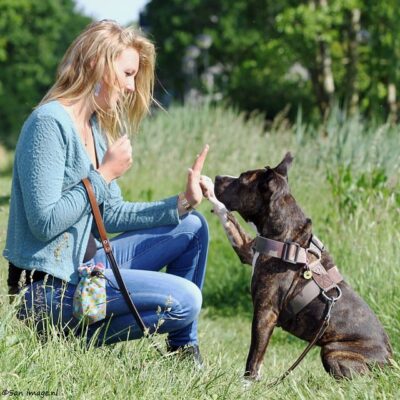
Training Tips Based on Body Language
Using body language cues in training sessions
Training your puppy based on their body language cues can be highly effective. For example, if your puppy seems distracted, you can use a more engaging tone or offer a higher-value treat to regain their focus.
Reading their body language during training can also help you understand when they’re feeling stressed or overwhelmed, allowing you to adjust the training environment to make it more comfortable for them.
By incorporating your puppy’s body language cues into training sessions, you can build a stronger bond and achieve more successful results.
Building trust and communication through body language
Building trust and communication with your puppy through body language is essential for effective training. By observing their body language cues, such as wagging tails, relaxed posture, and focused attention, you can gauge their level of comfort and understanding.
Responding appropriately to these cues, such as using positive reinforcement when they exhibit desired behaviors, helps strengthen your bond and reinforces their understanding of commands.
This two-way communication fosters a positive training experience and deepens the connection between you and your puppy.
Conclusion: Puppy Body Language
Recap of key points in deciphering puppy body language
- Observing tail wagging: A broad, sweeping wag indicates happiness, while a stiff, rapid wag can signal alertness or agitation.
- Understanding ear positions: Forward and alert ears indicate attentiveness, while pinned-back ears suggest fear or aggression.
- Recognizing facial expressions: A relaxed face with bright eyes and a slightly open mouth indicates happiness, while wide eyes with the whites showing indicate fear or anxiety.
- Interpreting vocalizations: Barking can indicate excitement, while whining may signal distress or a need for attention.
- Reading body posture: A relaxed and loose body posture indicates calmness, while a stiff and tense posture suggests alertness, anxiety, or aggression.
- Responding to behavior: Providing reassurance and comfort when your puppy shows signs of fear or anxiety, and redirecting behavior using positive reinforcement during training sessions.
Importance of building a strong bond with your puppy through understanding their communication signals
Building a strong bond with your puppy through understanding their communication signals is essential for a harmonious relationship. It strengthens trust and mutual understanding, enhancing training sessions and making them more effective and enjoyable.
By understanding your puppy’s body language during social interactions with other dogs, you can prevent conflicts and promote positive socialization experiences. Recognizing signs of stress or discomfort in your puppy allows you to address their needs promptly, ensuring their well-being and comfort.
Ultimately, fostering a deep connection through understanding and responding to your puppy’s communication signals leads to a happier and more fulfilling relationship for both you and your furry companion. If you’re looking to add a new furry friend to your family, consider adopting one of our thoughtfully bred puppies from reputable breeders in Georgia and surrounding areas.
FAQs About Puppy Body Language
- Q: How can I tell if my puppy is happy?
- A: Happy puppies often have relaxed body language, including a wagging tail, bright eyes, and a slightly open mouth. They may also exhibit playful behavior and seek attention from their owners.
- Q: What does it mean when my puppy’s ears are flattened against their head?
- A: Flattened ears usually indicate fear, submission, or discomfort. Your puppy may be feeling intimidated or anxious in certain situations.
- Q: How do I know if my puppy is feeling stressed or anxious?
- A: Signs of stress or anxiety in puppies include excessive panting, frequent yawning, lip licking, and avoiding eye contact. They may also exhibit behaviors such as hiding or trembling.
- Q: What should I do if my puppy shows signs of fear or aggression?
- A: If your puppy displays signs of fear or aggression, it’s important to remain calm and avoid escalating the situation. Redirect their attention using positive reinforcement and remove them from the stressful environment if possible.
- Q: How can I help my puppy feel more comfortable in new or unfamiliar situations?
- A: To help your puppy feel more comfortable in new environments, introduce them gradually and use positive reinforcement to reward calm behavior. Provide plenty of opportunities for socialization to build their confidence.
- Q: What should I do if I’m unsure about my puppy’s body language?
- A: If you’re unsure about your puppy’s body language, it’s best to observe their overall behavior and context. If you’re still uncertain, consult with a professional dog trainer or veterinarian for guidance.


